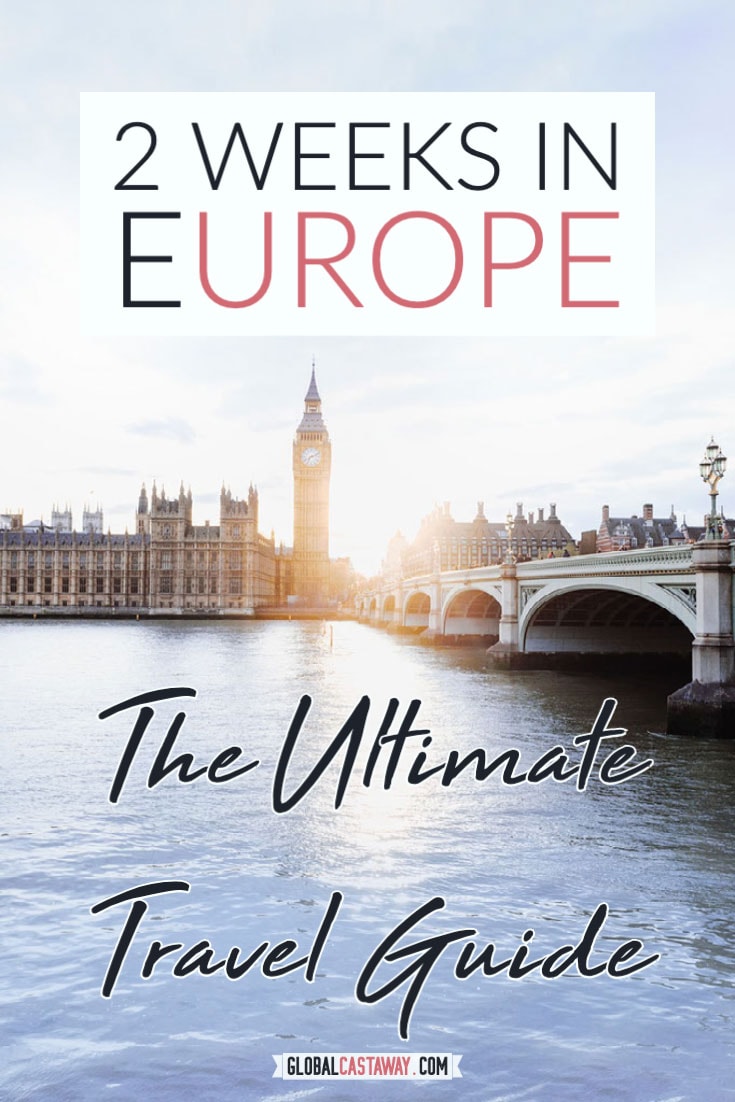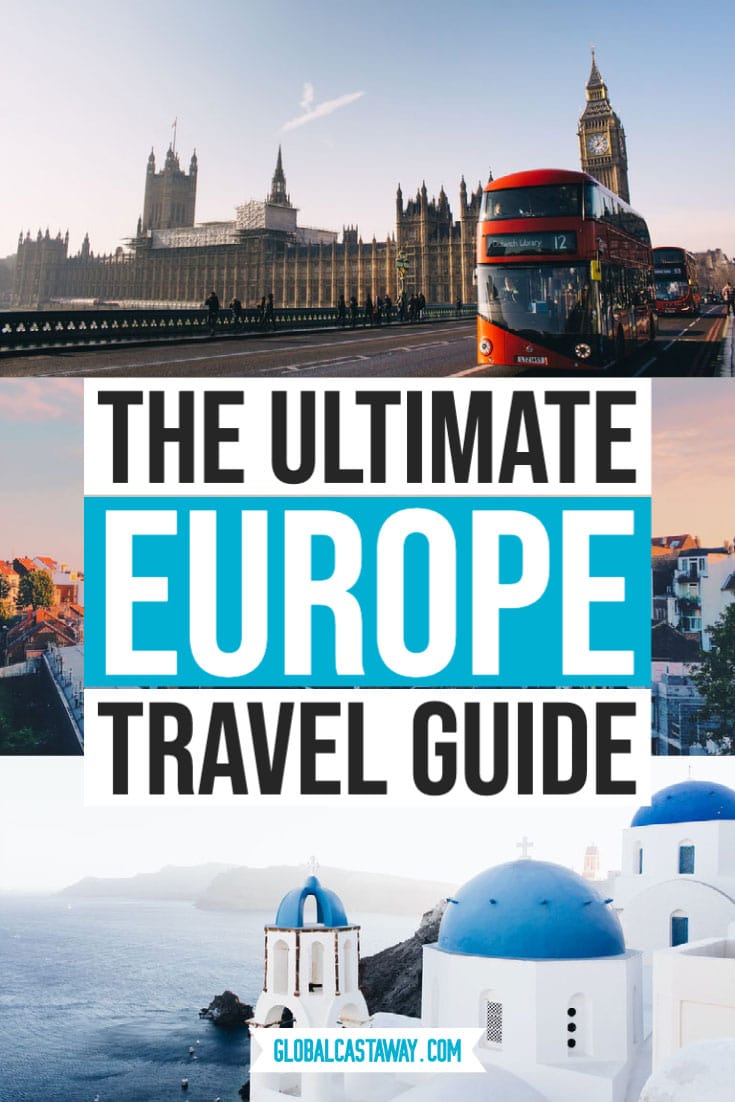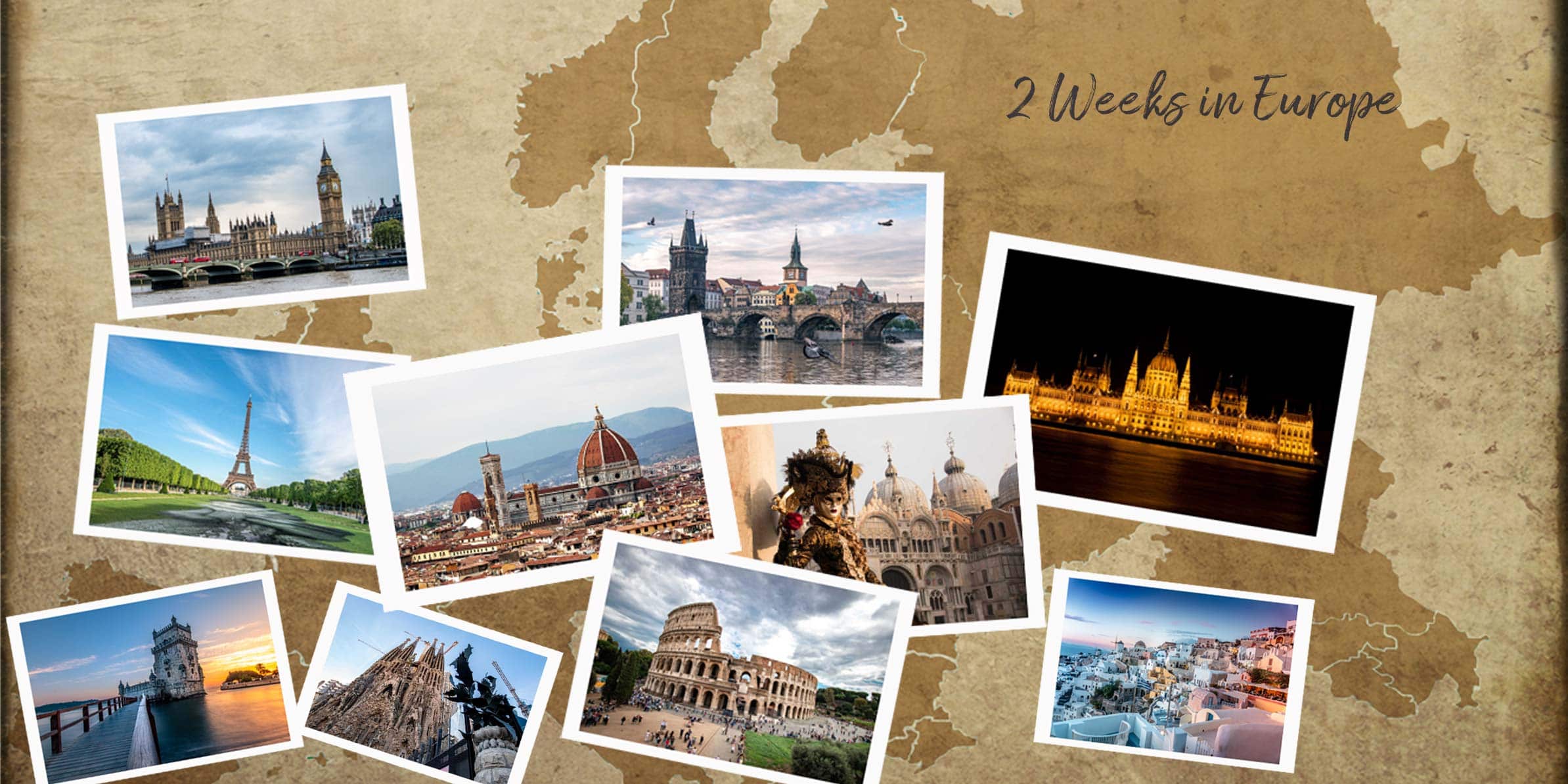You’re about to go on your dream journey, and you’re looking for the perfect 2-week Europe itinerary? Well, there’s no one-size-fits-all here. There are more than 40 countries in Europe, and while they do share some similarities, they are profoundly different.
While there isn’t a 2-week Europe itinerary that would fit every traveler’s demands, enjoying two weeks in Europe is easy. To help you get the best adventure tailored to your needs, I’ll give you ten itinerary ideas, share some tips about planning the perfect trip, and answer your questions. In the end, you’d be perfectly capable of preparing the journey of your life.
Two-Week Europe Itinerary Suggestions
I’m born and raised in Europe. It’s the continent I’ve explored the most, and I’m familiar with the countries here. I’ve either traveled myself or carefully researched all of the suggested routes. That being said, the itineraries are still just suggestions. When we’re talking about your perfect 2-week Europe itinerary, nothing is set in stone.
If you are going to design your own journey from scratch, my two vital tips are 1) don’t include more than three cities, and 2) Try to make sure the flight back home is from the last town you visit.
The Iconic 2-Week European Itinerary – London, Paris, Rome
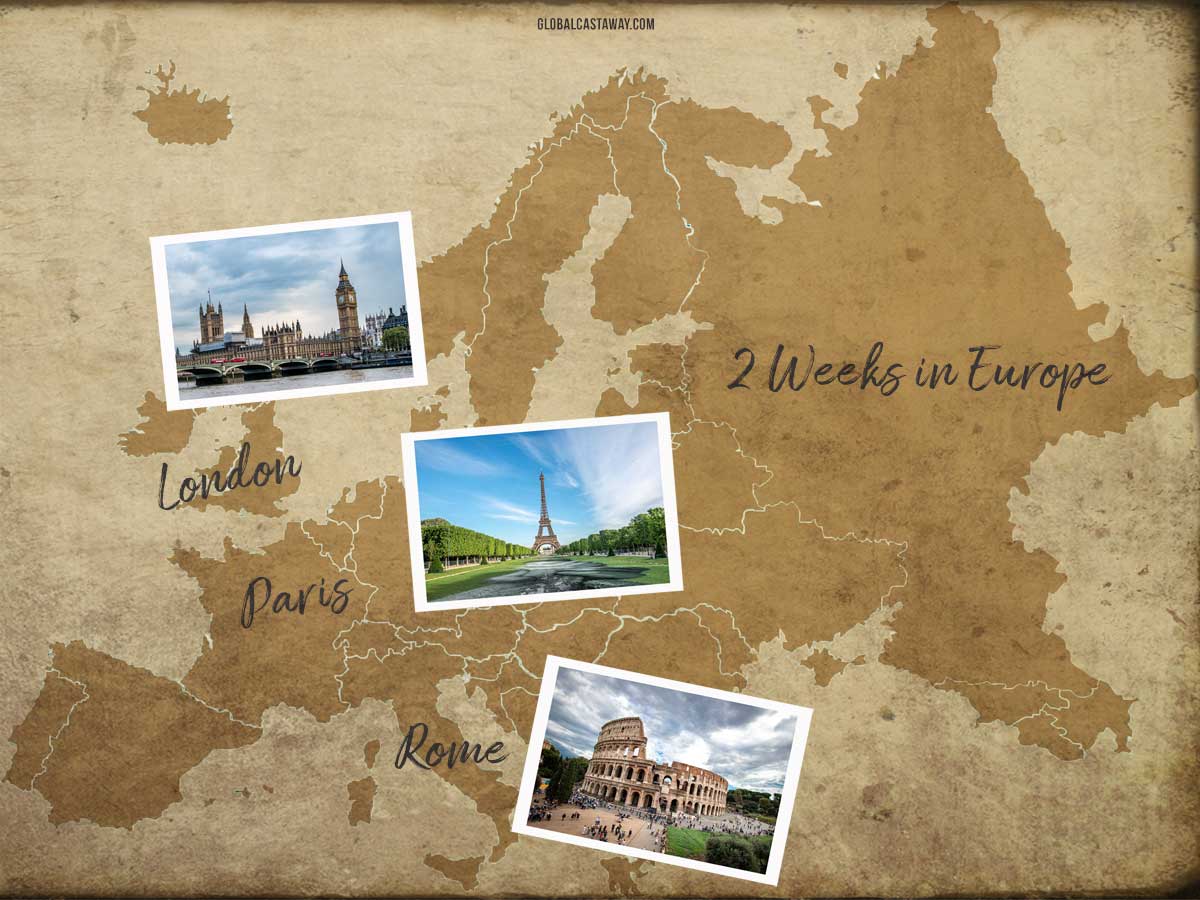
If you want to get the best out of Europe, see the iconic landmarks and post the most envy-inducing photos on Instagram, there’s no better route than this.
All three Paris, London, and Rome feature distinctive cultures topped with a global icon landmark. My suggestion is to spend four days in London and Rome and five days in Paris. Add the extra remaining day to your first destination (jet lag recovery day).
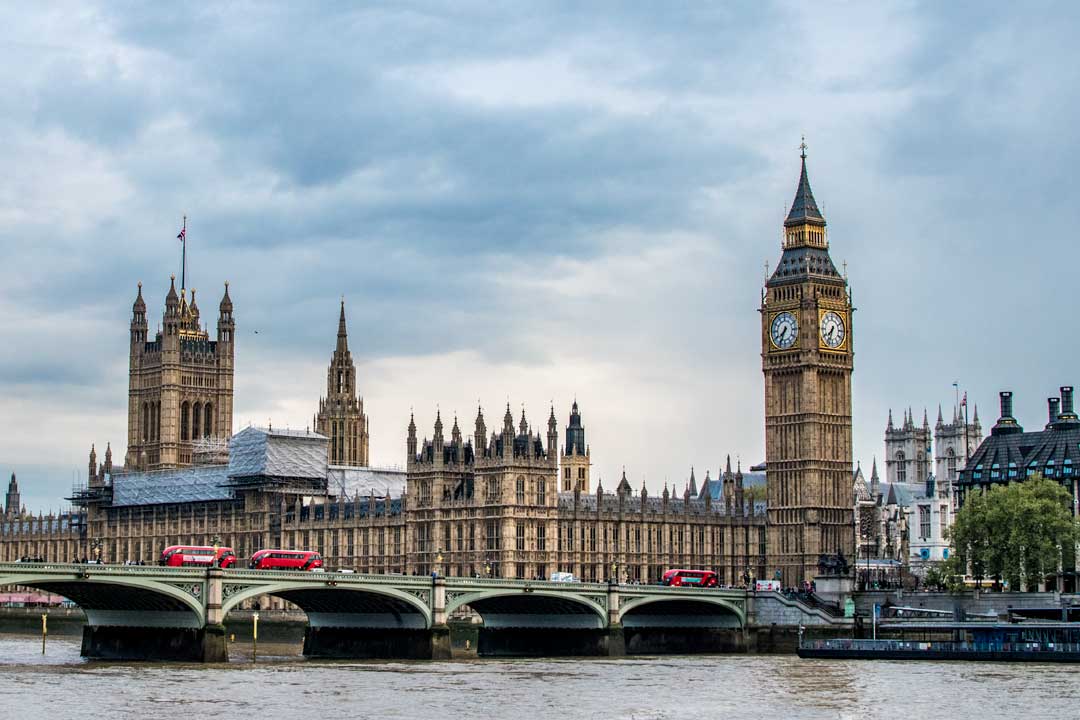
London – In four days, you should be able to check most of the city’s landmarks. The must-sees are Big Ben and the Houses of Parliament, the London Eye, Tower Bridge, The Buckingham Palace, and the British Museum. If you keep a quick tempo, you can also check the Westminster Abbey, The Tower of London, The Shard, St. Paul’s Cathedral, The South Kensington Museums, Trafalgar Square, and Piccadilly Circus.
Before you visit London, make sure you check my London guide. I can guarantee it will come in handy.

Paris – Paris is the city with the most iconic landmarks in the world. There’s hardly a person on Earth who hasn’t heard of the Eiffel Tower, The Louvre, Arc de Triomphe or the Notre Dame Cathedral. And those are just the heavyweights. Paris is home to so many cultural treasures that you can spend your entire 2 weeks in Europe there and still have something to see. I won’t even mention the time you’ll spend licking your plate in some cute french restaurant.
A lot of people feel disappointed by Paris after their visit. That’s because they go there unprepared. Everything you want to see in Paris needs to be booked beforehand; otherwise, you are guaranteed to spend most of your vacation waiting on a line.
If you decide to have Paris in your 2-week Europe itinerary, make sure to check my detailed Paris travel guide. You can find all the information you need to pick the best landmarks and skip all the lines.

Rome – And eventually all roads lead to Rome. The Eternal City is an integral part of the iconic European route. With its small winding alleys, lick-your-fingers restaurants, and romantical atmosphere, Rome is not just a city, Rome is a poem. With four days, you should be able to explore the Colosseum, The Roman Forum, St.Peters Basilica, the Sistine Chapel, the Vatican City Museums, The Pantheon, Piazza Navona and gain a few kgs along the way.
Rome is my favorite city in the whole world. I have a detailed guide that will save you plenty of time and money and show you how to explore some of the most iconic places in the world hassle-free. Make sure to check it out!
Imperial Heritage – Prague, Vienna, Budapest
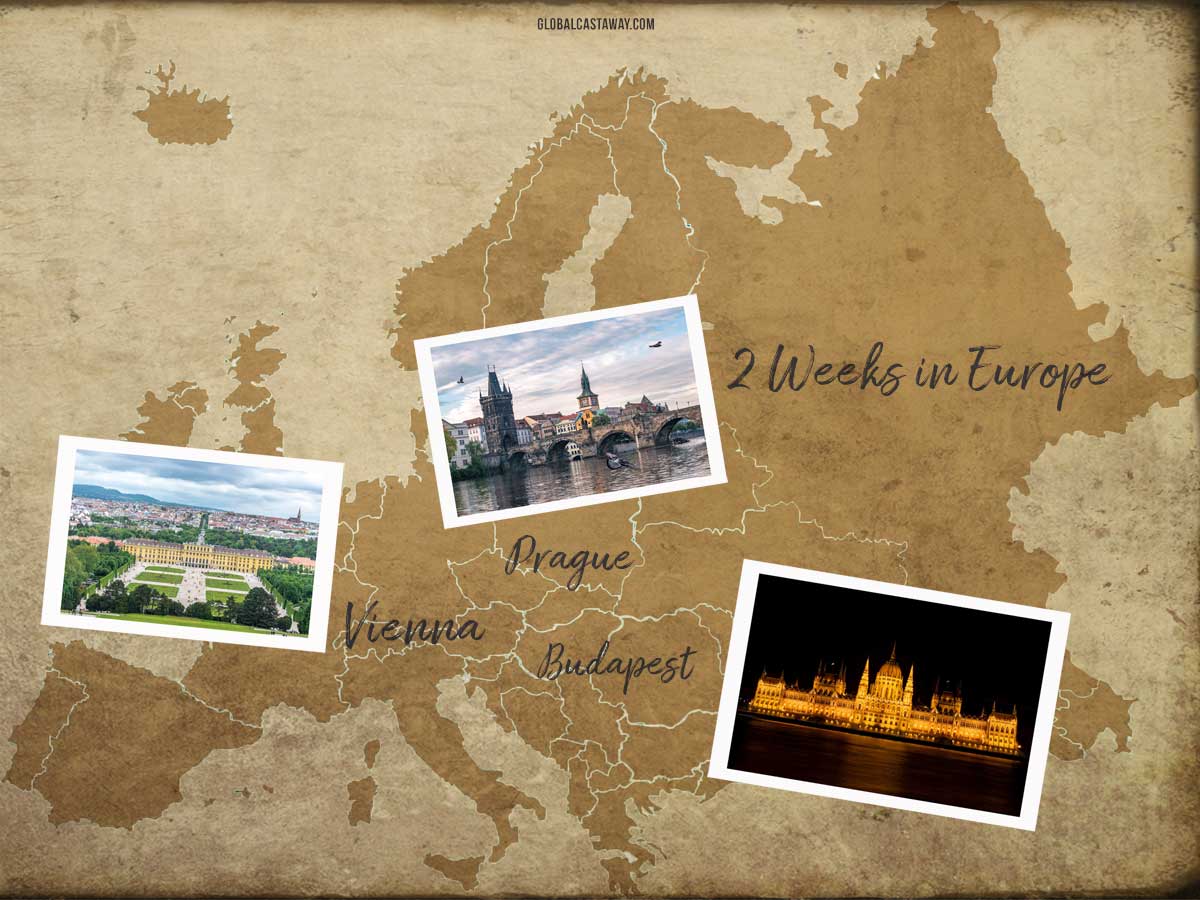
Prague – Vienna – Budapest is one of the most iconic European itineraries. Conveniently located just a few hundred km of each other, all three cities were prime centers of the glorious Austro-Hungarian empire.
Exploring Central Europe gives a bit different feeling than exploring the western part of the continent. It feels way more fairytale-like. For this itinerary, I recommend spending four days in Budapest, five in Vienna (if you are into museums otherwise four) and the rest in Prague.
The easiest way to move around the cities is via train/bus. To see all the info you need to do the central Europe route (including prices, schedules, and hotel recommendations), you can check out my in-depth Prague-Vienna-Budapest travel guide.

Prague – The most significant landmarks include Charles Bridge, The Old Town, Prague’s Astronomical Clock, the Castle Complex, and of course, the Czech beer. To see the best way to organize your days in Prague and various tips and tricks, check out my ultimate Prague guide.
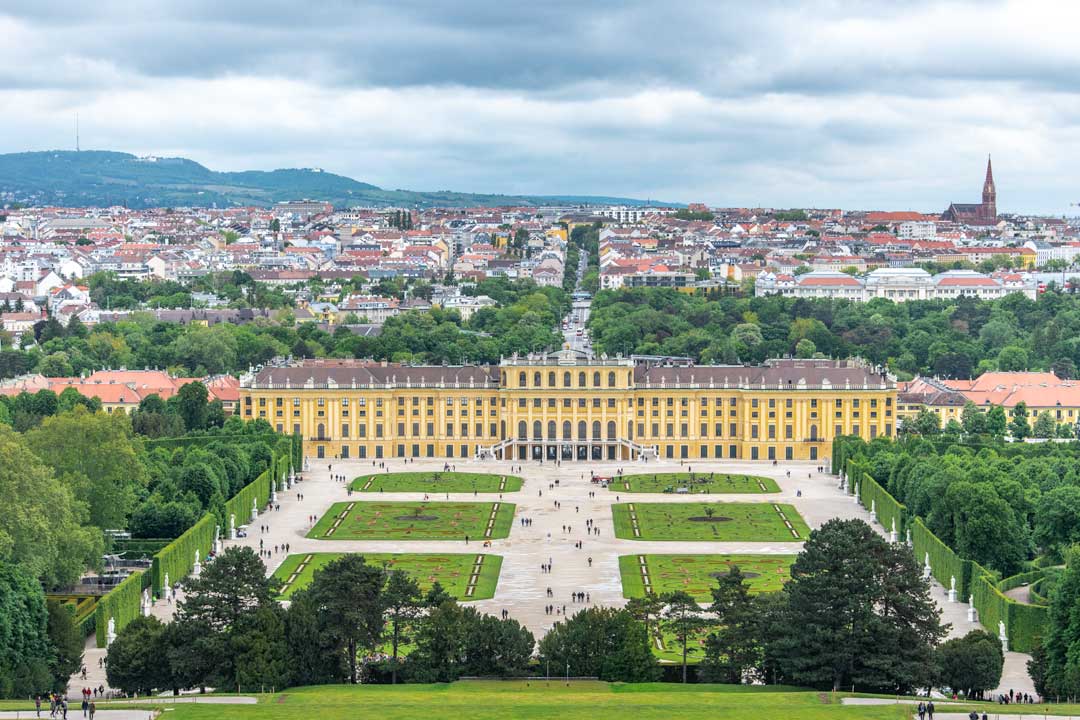
Vienna – When in Vienna, you should definitely check Belvedere Palace, Schönbrunn Palace, Hofburg Palace, The Museum of Fine Art, and of course, the classical Vienna Coffee with Sacher cake. Exploring that many palaces and museums is a bit tricky, so you can use my very detailed Vienna city guide to help you.

Budapest – The capital of Hungary is one of those cities that has a little bit of everything. The main attractions are the Parliament Building, Fisherman’s Bastion, Buda Castle, Szechenyi Chain Bridge, the ruin bars, and the food scene. Navigating Budapest is quite easy, but if you want to prepare your journey in detail, I recommend checking my Budapest travel guide.

Munich (optional) – If you have enough time, Bavaria’s capital will be a perfect destination for this itinerary. With plenty of middle-age history, a fabulous palace (Nymphenburg Palace), and close to the most beautiful castle in Europe (the world?) – Neuschwanstein Castle, Munich is as cool as it gets.
Make sure to check out my detailed Munich itinerary guide.
Iberian Adventure – Porto, Lisbon, Madrid, Barcelona
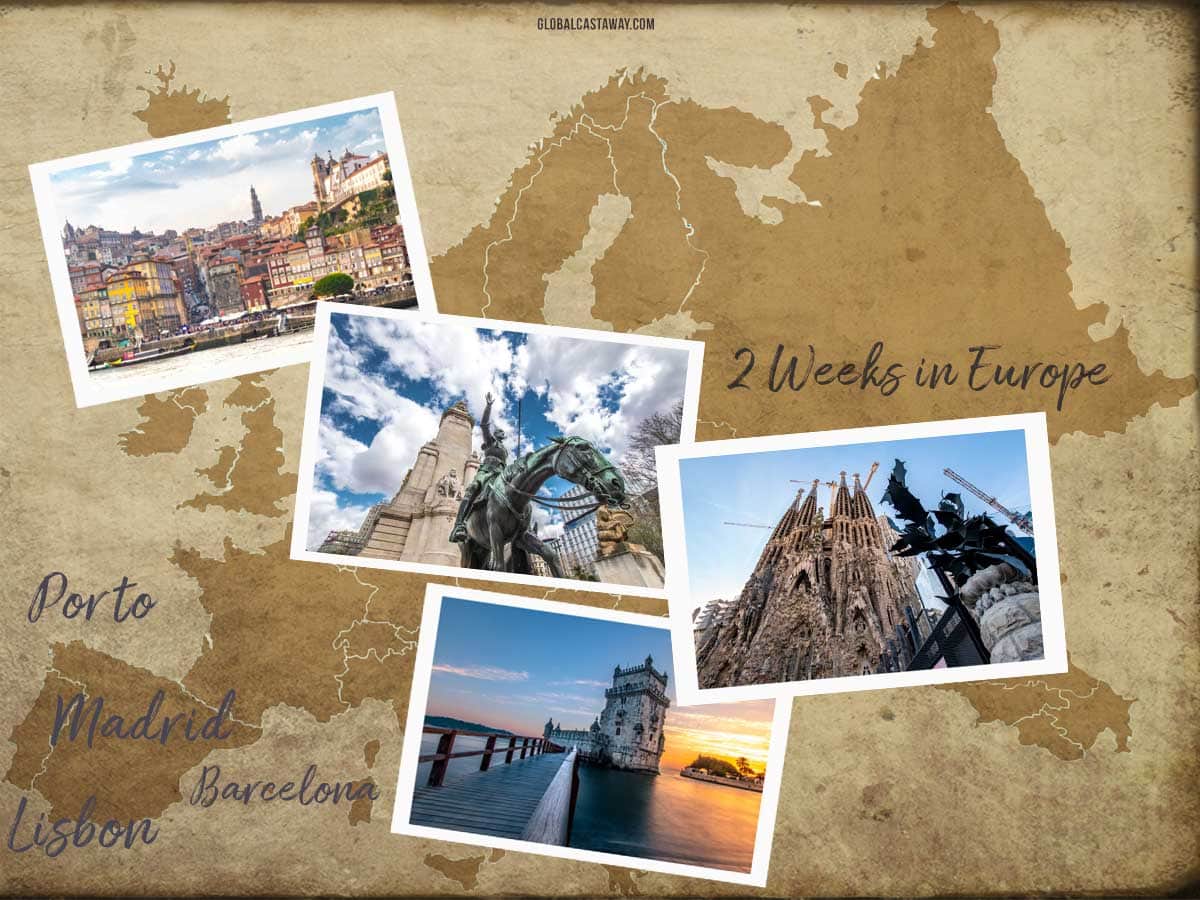
First, of the couple 2-week European itineraries that feature more than three destinations, this route won’t take you all around the continent but will guarantee a great time. Exploring the top cities in Portugal and Spain is a bucket list adventure that will introduce you to four very distinctive cultures.
Transportation between Porto – Lisbon, and Madrid – Barcelona is best done by train. It’s cheap, fast and comfortable. The distance between Lisbon and Madrid is a bit bigger so you can catch an inexpensive Ryanair flight or get the overnight bus that will save you time and money,

Porto – The biggest city in Northern Portugal is one of the most underrated places in Europe. With three days to spend, you can explore all the Harry Potter landmarks, the picturesque churches, enjoy more than one sunset at Gaia and go for on a wine tasting tour…or two…or three!
To get all the details about Porto and plan the perfect itinerary, check out my ultimate Porto travel guide.

Lisbon – The capital of Portugal is one of the most colorful cities on the continent. With three (or four) days there you can get lost the picturesque Alfama district, greet the sunrise at Portas do Sol, explore the ruins of medieval Lisbon in Carmo Convent, take a walk inside the UNESCO recognized Jeronimos Monastery and finish the day by eating a dozen Pastel de Natas while enjoying the sunset at the Belem Tower. Depending on your tempo, you can also go to nearby Sintra and explore the most colorful castle in the world!
I have a handy Lisbon guide that can show you how to do all that in three days. Make sure to check it out!

Madrid – The capital of Spain is home to three of the very best art museums in the world – Prado, Reina Sofia and the Thyssen Bornemisza Museum alongside the glorious Spanish Royal Palace, the ancient Egyptian Debod Temple and the oldest restaurant in the world. Three days should be enough to explore the essential landmarks and visit a couple of Tapas Bars.
I have a detailed guide about Madrid that can give you all the info you need to have the time of life. If you choose this European itinerary, make sure to check it out!

Barcelona – Last on the list, we have the colorful capital of Catalonia. Marked by the architectural genius of Gaudi, Barcelona features some of the biggest landmarks in Spain. Make sure to check Sagrada Familia, Casa Batllo, take a walk around La Rambla, explore the creepy Gothic Quarter, and take a top Instagram photo from the roof of the Barcelona Cathedral.
My Barcelona travel guide will explain all the landmarks in Barcelona and give you detailed info and tips that will make your travel as effortless as possible. Don’t miss it out!

Seville (optional) – If you’ve already seen Madrid or Barcelona, Seville is the perfect replacement. The compact Andalucian capital is an amazing, underrated gem that guarantees a good time.
Here’s a detailed Seville travel guide.
Ciao, Bella – Rome, Florence, Venice
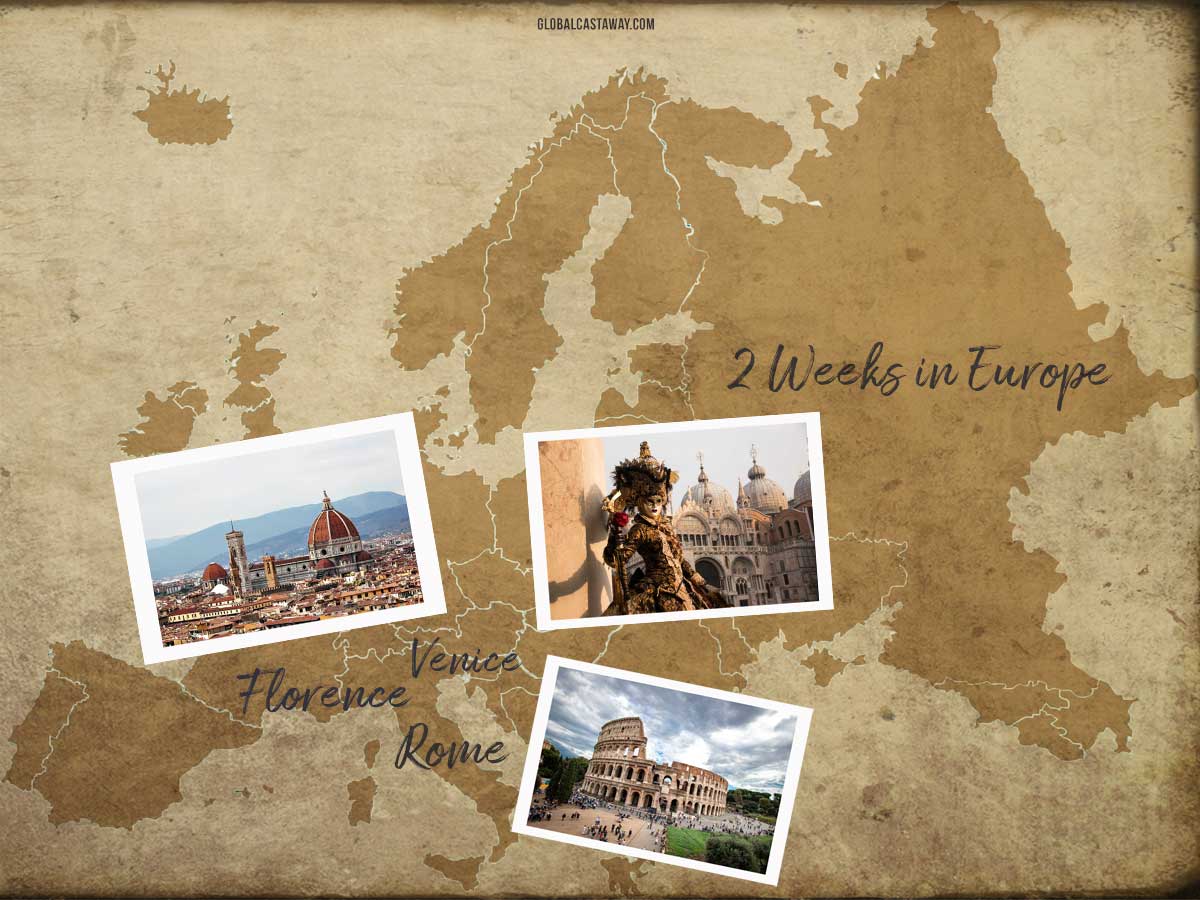
What about spending your entire 2 weeks in Europe in a single country? Sounds underwhelming, right? If that country is Italy, it’s not. Having countless things to see and do and featuring some of the most legendary and unique cities on Earth, spending 14 days on the Italian boot is a bulletproof recipe for a good time.
The easiest way to get around the country is via train, but make sure also to check the bus prices.
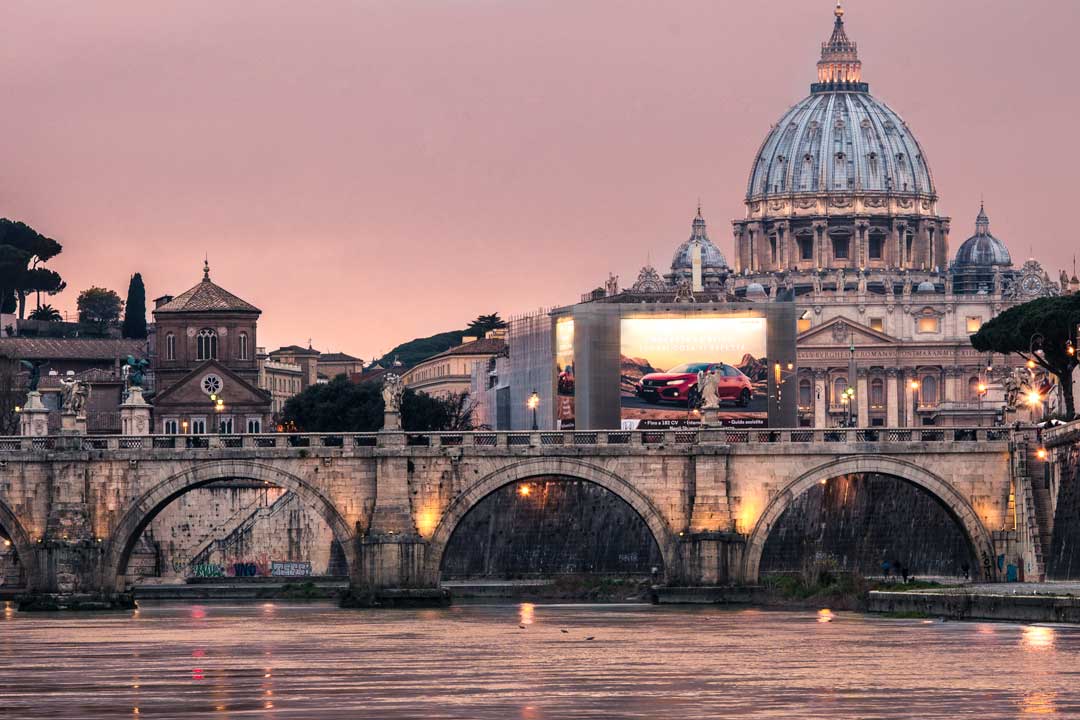
Rome – The capital of Italy and one of the greatest cities on Earth offers a one-of-a-kind introduction to Italian culture. Five days would let you enjoy the Colosseum, the Roman Forum, the Trevi Fountain, the Aventine Keyhole, and all the marvels of the Vatican City, including St. Peter’s Basilica, the Sistine Chapel, and the Vatican Museums.
If you have Rome in your 2-week European Itinerary, don’t miss my detailed travel guide that will save you plenty of hassle.
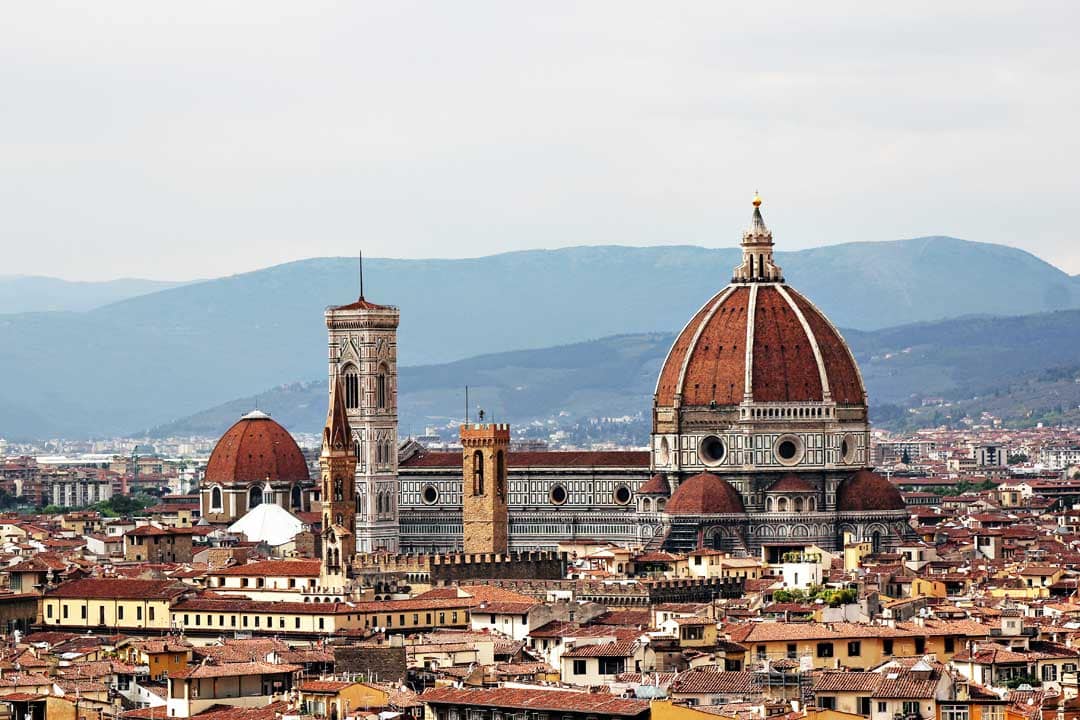
Florence – The capital city of Tuscany and the birthplace of the Renaissance offers one of the most unique and vibrant city adventures in Europe. Four days in this bucket-list destination can offer a walk back in time around the city’s historic center, a top art museum – the Uffizi Gallery, and lazy sunset watching at the incredible viewpoint at Piazzale Michelangelo.
To get all the details and plan the perfect Florence trip, I wrote the perfect Florence itinerary guide for you.

Venice – The Floating City of Masks is another world-class destination in Italy. Having more water canals than streets, Venice is the most unique city in the world. With five days there, you can catch a ride on a gondola, watch the sun setting behind the San Marco Cathedral, enjoy the interior of the beautiful Doge Palace, and (if visited at the right time of the year) participate in the colorful Venice Carnival.
You can enjoy the Floating City without any guides, but my detailed Venice itinerary guide will surely make the planning easier.
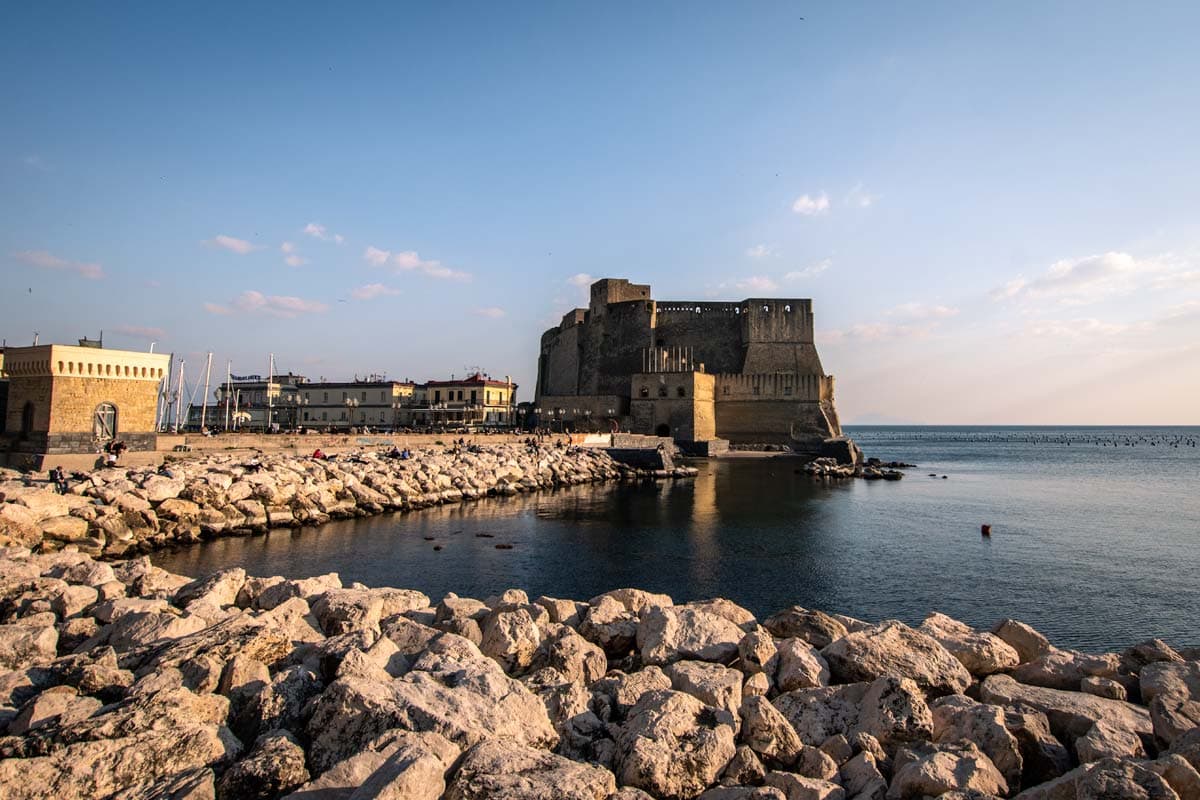
Naples (optional) – If you have the time and want to see a slightly different Italy, you may consider adding Naples to the list. The chaotic coastal city is a shock to all tour senses but offers this authentic vibe that few places today can offer. It’s also the birthplace of pizza and next to the most awesome UNESCO World Heritage site in the country – Pompei and the infamous Vesuvius volcano.
If Naples is something that sounds interesting to you, check my detailed guide for more pictures and travel details.
Sleep is Overrated aka The Party Route – Amsterdam, Berlin, Budapest
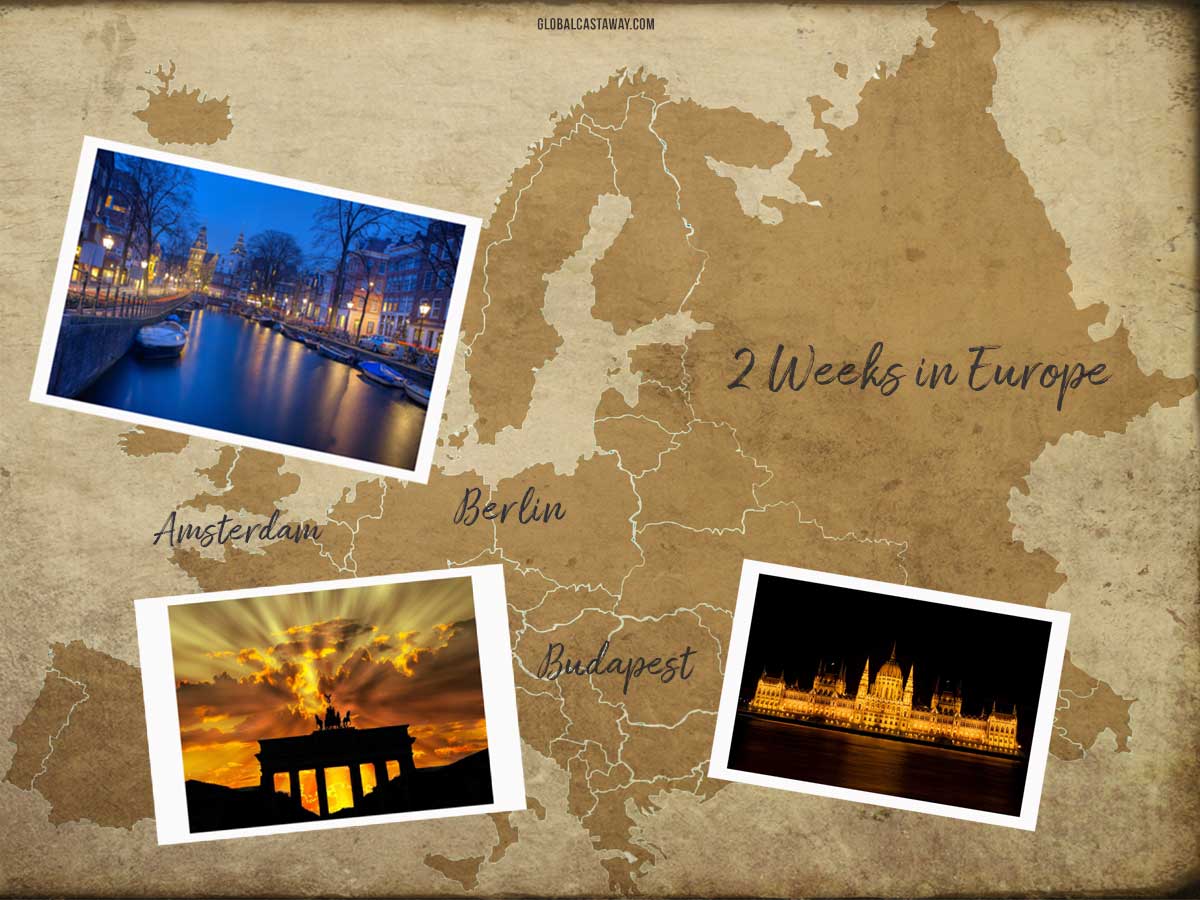
If your idea of a perfect 2 weeks in Europe is party, party, party, Amsterdam, Berlin, Budapest is your route. Suppose you are ready for a more exotic adventure. In that case, you may go to Eastern Europe and enjoy countless amounts of alcohol and carefree attitude for a fraction of your western Europe budget. If this is your first time on the continent, however, I suggest playing it safe and sticking to the more popular places in the west.
The distance between Amsterdam and Berlin is around 600km, making it suitable for a train/bus ride. Berlin to Budapest, however, is close to 900, so you may want to check the Wizzair flights (who usually give the best rates to Budapest). Distribute your days depending on your budget (Amsterdam – most expensive, Budapest – cheapest) and the parties you wish to attend
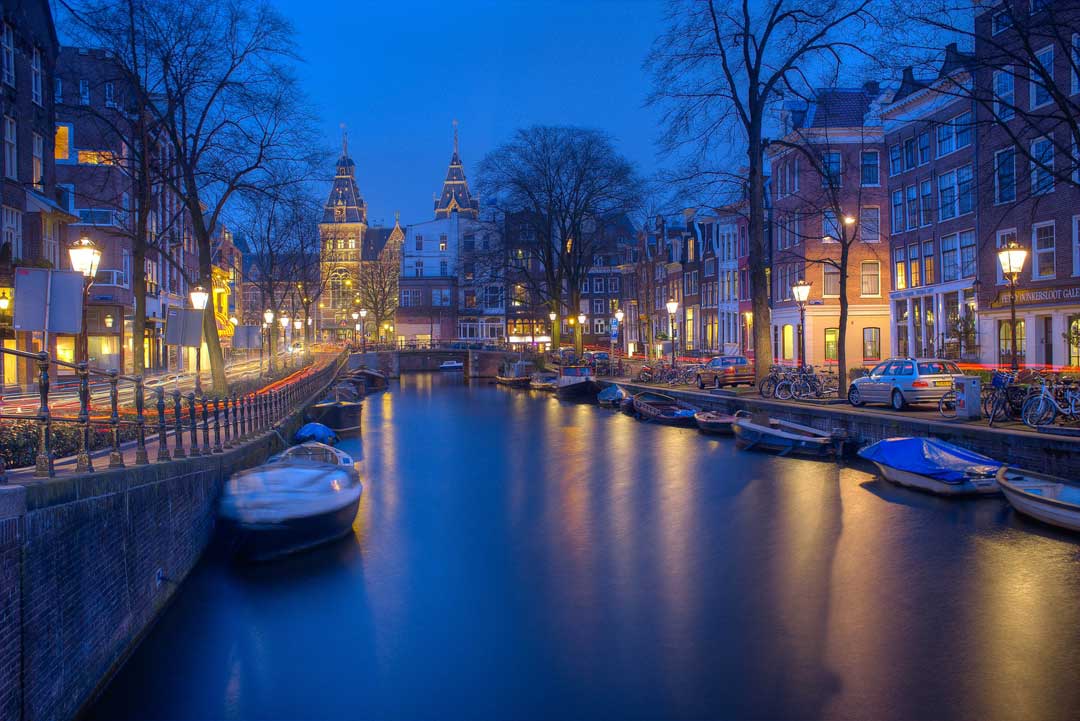
Amsterdam – The most open-minded city in Europe, Amsterdam is where everything seems to be allowed. With its famous ‘coffee’ shops and of course the Red Light District, it’s not a surprise that every weekend the tiny alleys of the Duch capital are full of tourists. The best clubs you want to check in Amsterdam are Radion, Claire, Shelter, De School, and OT301.
If you want to explore some of Amsterdam’s culture and history, you can check out the Van Gogh Museum, Rijksmuseum, and the Anne Frank House.
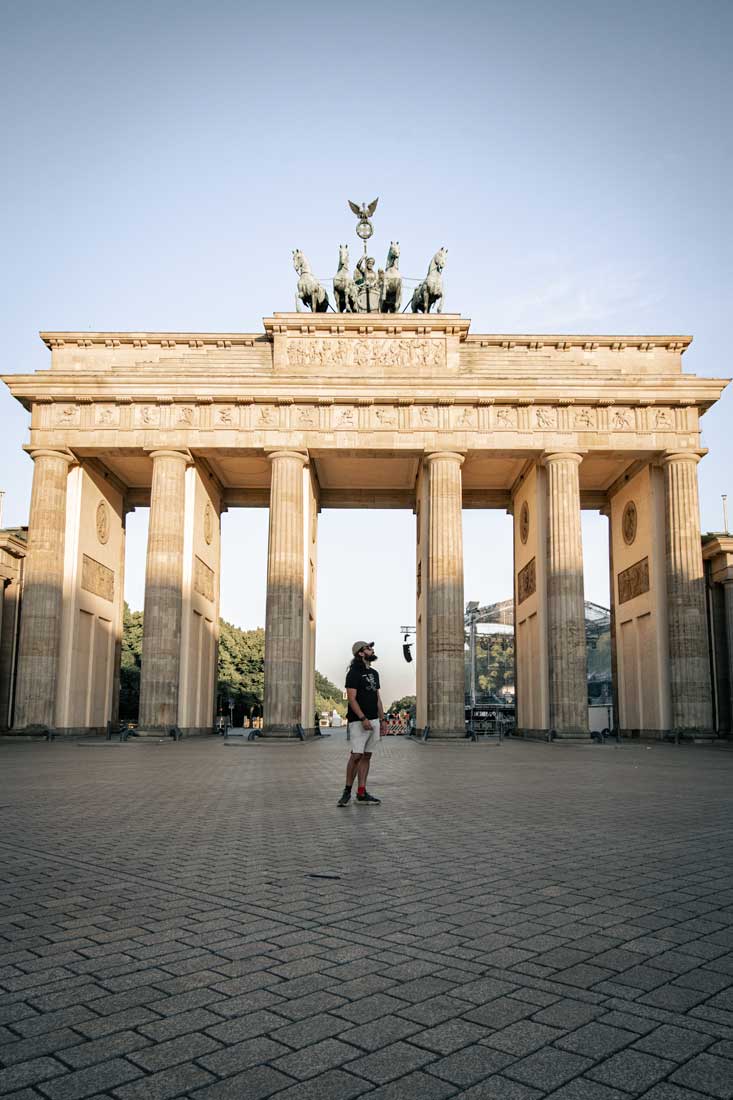
Berlin – With the fall of the Berlin Wall, the cultural upheaval spread all around the once-divided city. Today the German capital has one of the most prominent nightlife scenes on the continent. Some of the top clubs in Berlin are Berghain, SchwuZ, Anomalie Art Club, and KitKat.
During the day, you can check the Brandenburg Gate, the Reichstag Building, and the Berlin Wall Memorial. Make sure you see everything there is to see with my Berlin Itinerary Guide
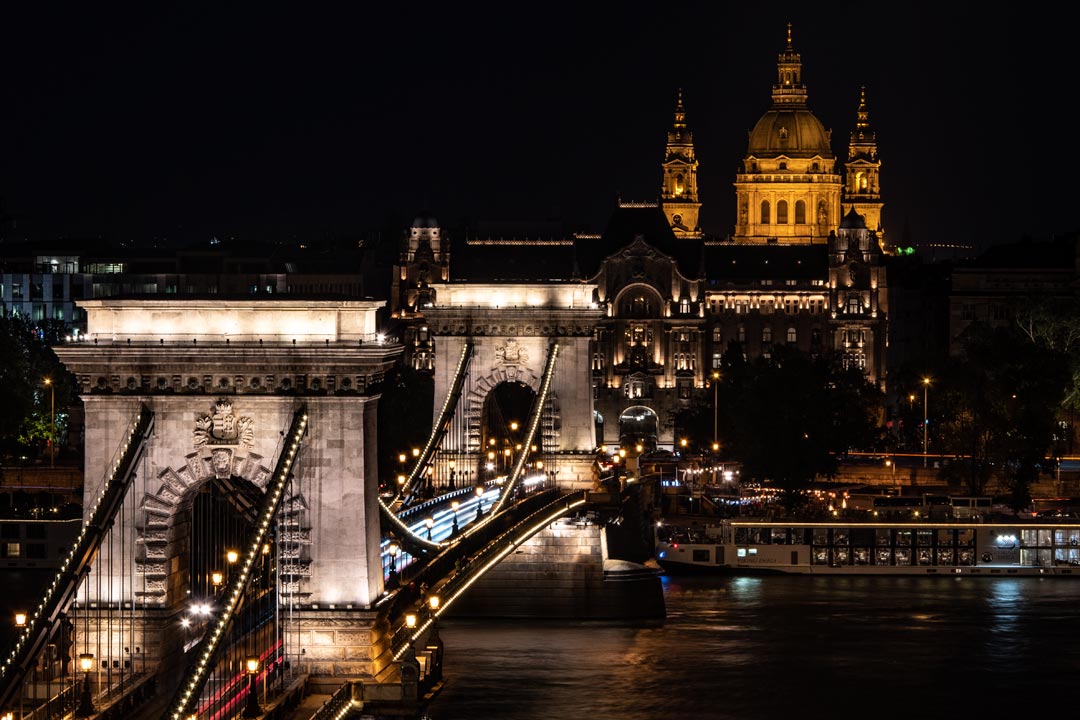
Budapest – Budapest will give you a vibrant blend of Eastern and Western Europe. With one-of-a-kind ruin bars, countless craft beers, and one of the richest fast-food scenes I’ve ever seen, the Hungarian capital is the perfect party spot. Some of the most popular ruin bars are Szimpla Kert, Instant & Fogas Ház, Mazel Tov, and UdvarRom.
During the day you can check out the Parliament Building, the Buda Castle and the Fisherman’s Bastion.
Check out my Budapest travel guide.
Beach Galore – Amalfi coast, Croatia, Greece
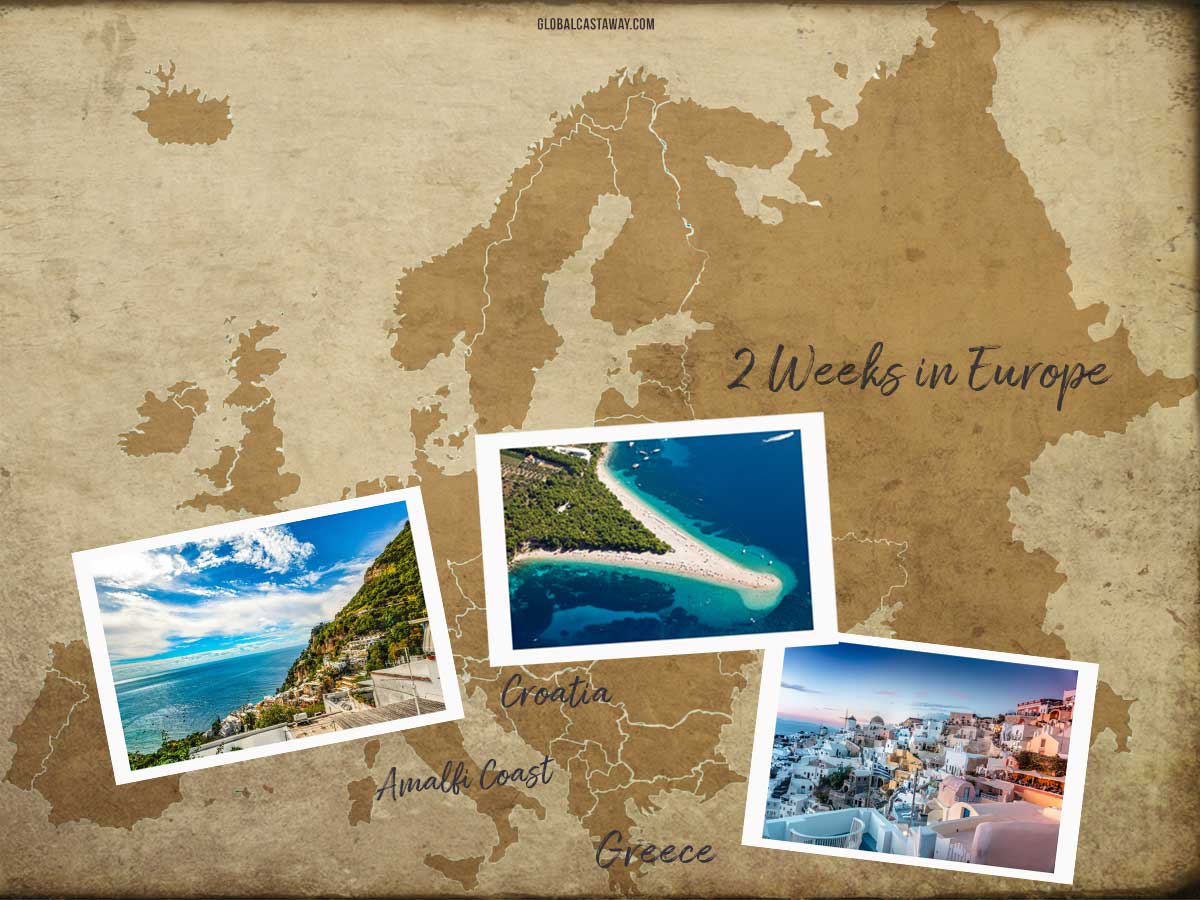
If your 2 weeks in Europe are during the summer and you want to have the beach vacation of your life, this is the route for you. You won’t only enjoy some of the best seashores in the world, but you’ll also discover three very different and colorful cultures.
The best way to travel between the destinations on this route is via plane. Spend four days in Italy and Croatia, and all the rest in Greece. That way, you can explore more than one island there.
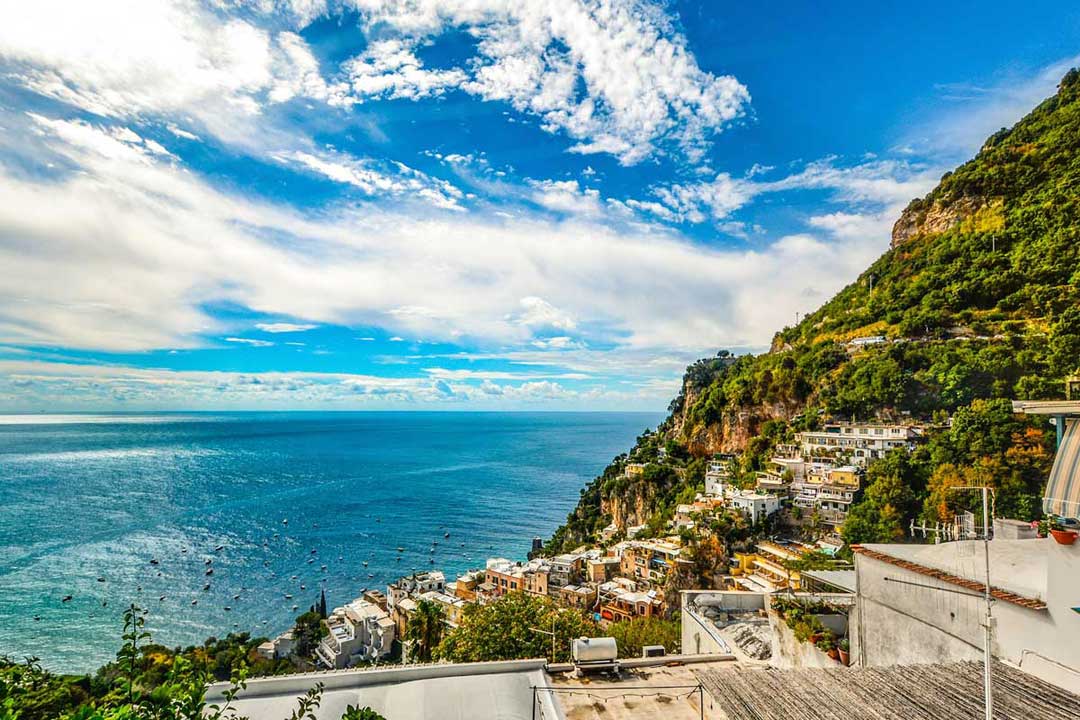
The Amalfi Coast – Italy’s premium vacation spot, the Amalfi coast, is home to some of the best beaches on the continent. The most highly rated are Marina Grande of Positano, Marina Grande of Amalfi, Vietri Sul Mare, and the beach of Erchie. An incredible nature combined with the warm Italian culture and premium hospitality makes this destination a prime spot for all beach lovers around Europe.

Croatia – You may not be aware, but Croatia’s western coast is home to some of the best beaches in the world. That’s right, the world! An extra perk is that they are so underrated that you won’t be surrounded by countless tourists crowds. If you make an effort to find some hidden ones, you may have the tiny idyllic sand shores just for yourself.
The most highly rated beaches in the country are Sakarun Beach (on Dugi Otok Island), Nugal Beach (Makarska), Zlatni Rat Beach (Brac Island) and St. Ivan – Watermelon Beach (Lubenice – Cres Island).
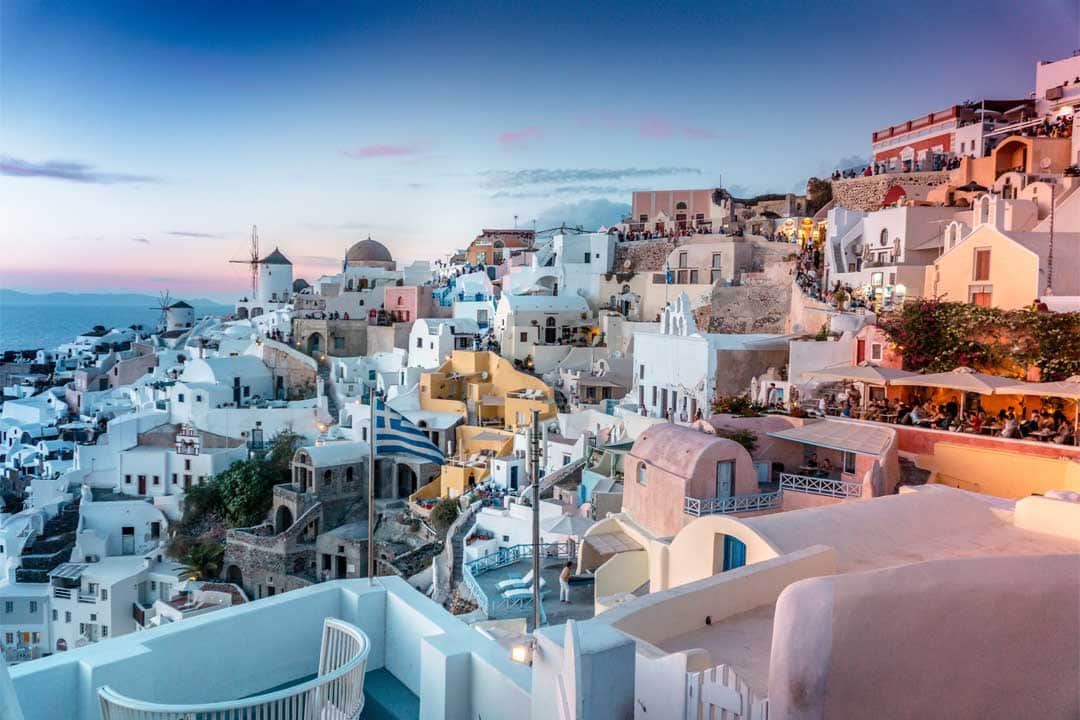
Greece – The most beachy nation in Europe, Greece, is famous for its beautiful islands, white shores, and azure waters. Picking the right island for you may require a little bit of extra research, but whichever you decide in the end, I’m sure you won’t be disappointed. There simply isn’t a lousy island in Greece!
The most popular options are Santorini, Mykonos, Crete, Halkidiki, Corfu, Milos, Rhodes, and Zakynthos.
The Magic of The North – Iceland, Norway

This 2-week European itinerary won’t be centered around landmarks. The Northern route is focused around the one-of-a-kind nature in Iceland and Norway. It’s the only route that features just two destinations, and that’s because of the abundance of natural treasures in those countries.
The easiest way to get in or out of Iceland is via plane, so this is my recommended way of transportation here.

Iceland – The island that comes straight out of a fairytale. The nature of Iceland is so utterly different from anything else on Earth that it is hard to explain with words. Steaming volcanos, black beaches, and ice caves are the regular there.
Rent a car and embark on a journey of a lifetime alongside the Golden, Diamond, or Arctic circles. The natural gems you’ll see along the way are guaranteed to exceed your wildest expectations.

Norway – One of the world’s wealthiest countries can offer stunning natural sights blended with cute little towns. Take some of the most scenic train rides in the world, explore the UNESCO recognized Geirangerfjord region or the Tromso Fjords, look for the midnight sun in the Arctic circle, take a polar bear photo at the Svalbard Islands or have someone take your photo at Trolltunga. The amount of bucket list adventures to have in Norway is ridiculously high.
Caviar and Champagne – The Luxury 2-Week European Itinerary – French Riviera, Monaco, Milan

If you are looking for the most glamorous way to spend 2 weeks in Europe, this is the route for you. All destinations on the itinerary are favorite vacation spots for celebrities, athletes, and all kinds of millionaires.
I won’t suggest transportation methods here. If you can afford a vacation like that, you probably already have a private driver to get you to Monaco and a charter flight to Milan.
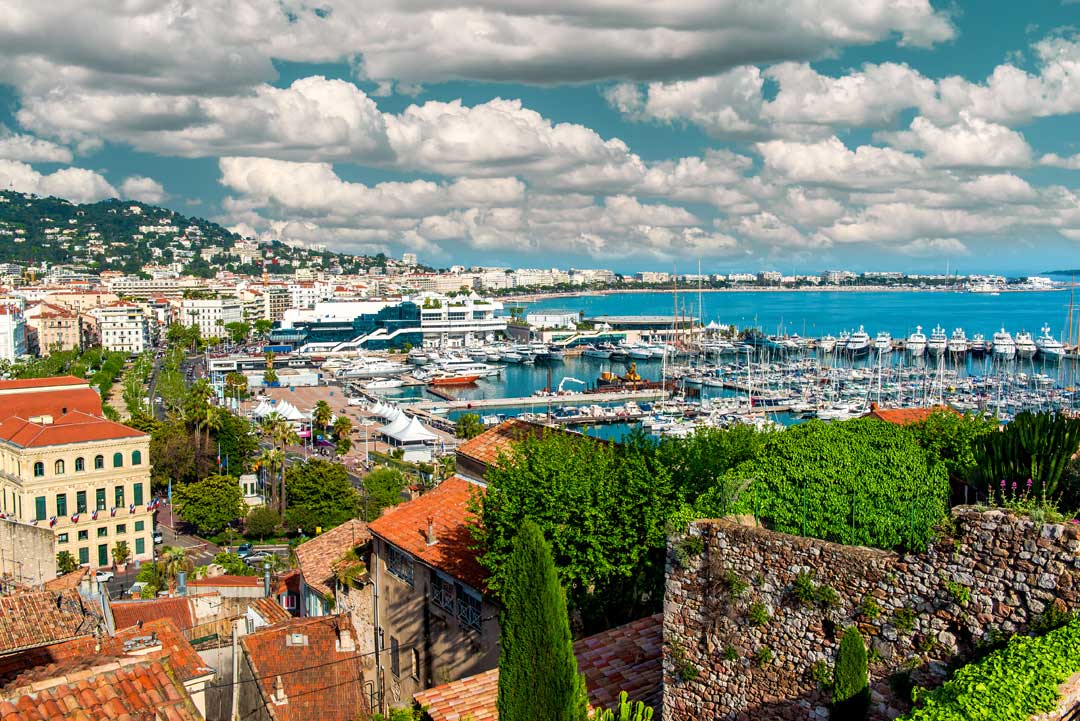
The French Riviera – The Mediterranean coast of southeastern France is the premium vacation spot in the country and houses high-end resort towns such as Nice, Saint Tropez, and Cannes. If possible, try to align your trip with the Cannes Festival (usually in May). No place in the world hosts most celebrities than Cannes in May.

Monaco – A synonym of wealth and luxury, Monaco is the ultimate playground for rich people. The small principality headed by the Prince of Monaco is known as the Las Vegas of Europe. The best places to check in Monaco are the Monte Carlo Casino, Jardin Exotique, and (if you visit in the right time of the year) the Monaco F1 Grant Prix.

Milan – The wealthiest city in the country, Milan, is home to half of Italy’s multi-millionaires, 20 Micheline Restaurants, countless high-end fashion boutiques, and the first and only Mandarin Oriental hotel in Italy. Milan is undoubtedly one of the most luxurious cities you can visit in Europe.
Shop Till You Drop – London, Paris, Barcelona, Milan
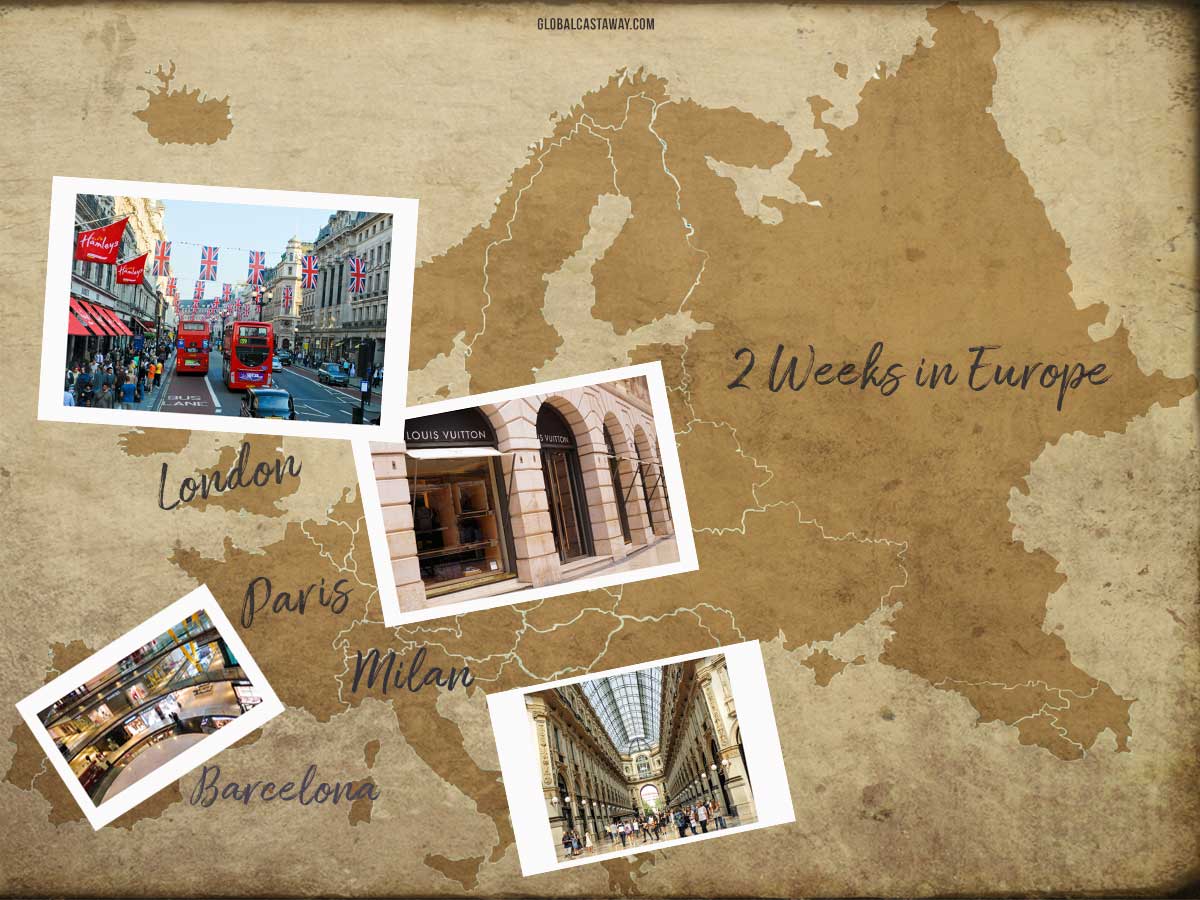
I have to admit, I’m not that big of an expert when it comes to shopping. Especially high-end shopping. I understand, however, that plenty of you envision the perfect 2 weeks in Europe spend around the high-end fashion boutiques, so I did my best to research this specific route.
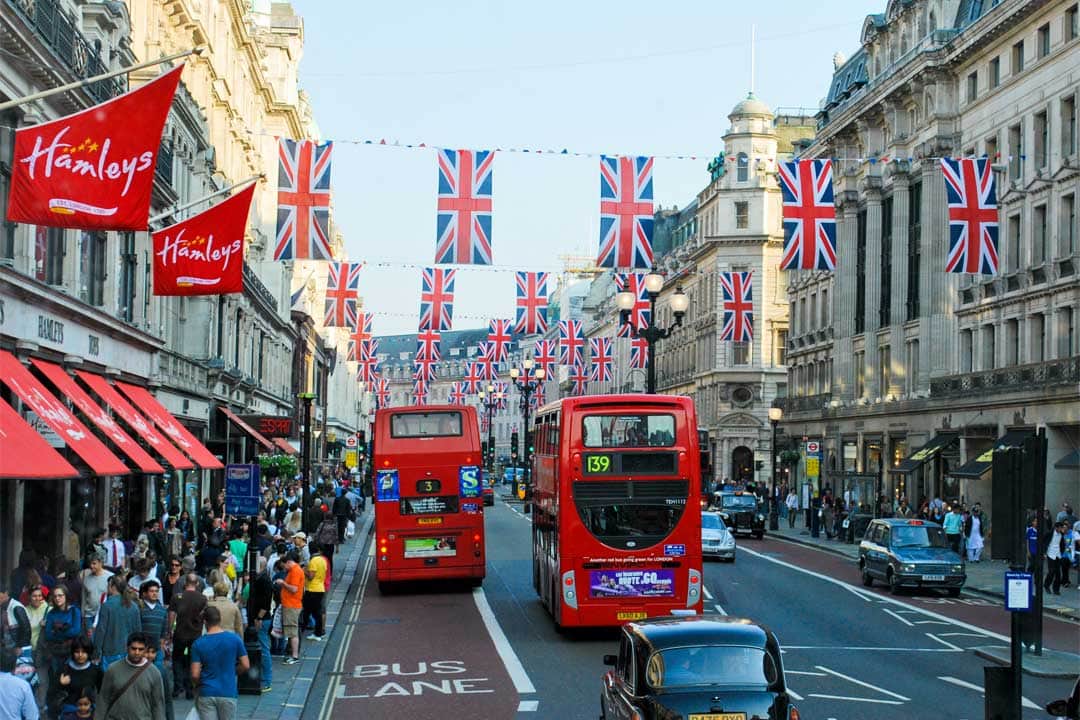
London – One of the very best shopping destinations in the world, London has everything you can ever want. The top locations include Oxford Street, Regent Street, St. James’s, Bond Street, and Mayfair. Also, every Autumn, London is the stage for London’s Fashion Week – a prime event in the fashion world.
Check the awesome London guide.
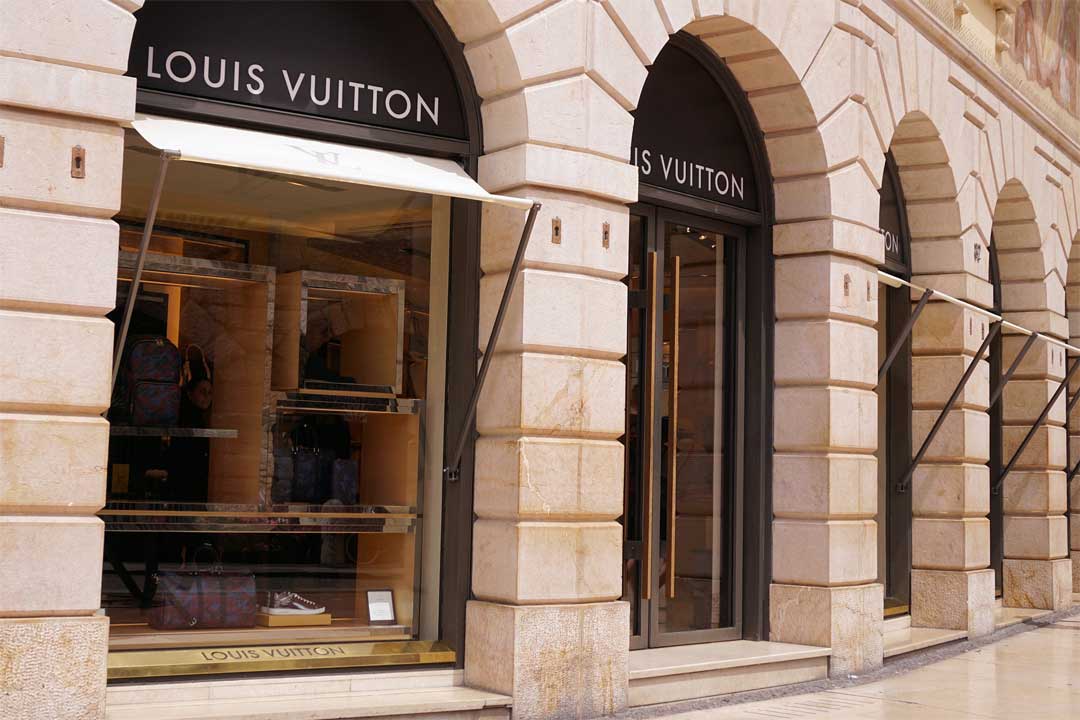
Paris – Home to Louis Vuitton, Hermès, Chanel, and Dior, Paris is the most fashionable city in the world. Even a guy like me, who knows nothing about fashion, is aware of that. The top shopping places in the capital of France are Champs-Elysées, Avenue Montaigne, The Marais, Boulevard Haussmann, and the Tuileries District. Paris Fashion Week is usually after the London one.
See the detailed Paris travel guide.

Barcelona – Who needs Gaudi when you have Gucci, right? With millions of tourists visiting every year to hit the stores, Barcelona is one of the fashion heavyweights in Europe. The top shopping places in the city include the Passeig de Gracia and Portal del Angel streets, La Roca Village, Pinza’t store, and Las Arenas Shopping Centre.
And here’s the Barcelona travel guide.
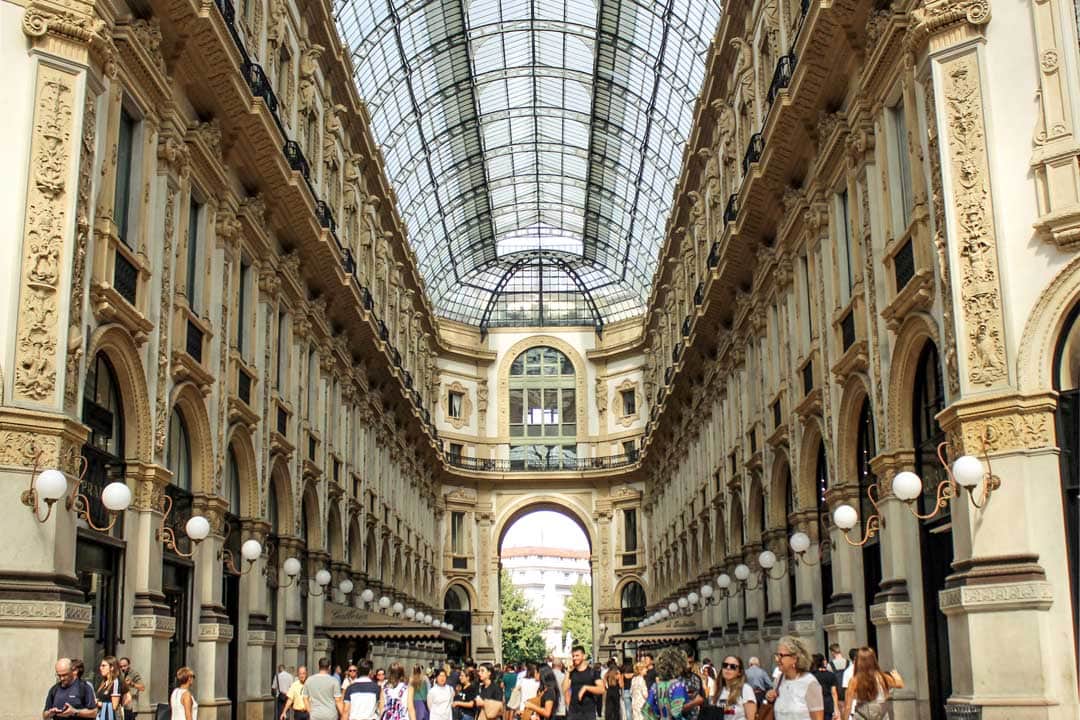
Milan – already mentioned that in the luxury itinerary, but here we go again – Milan is the wealthiest city in Italy and home to half of the country’s multi-millionaires. With its countless world-renounced brands, the Italian fashion scene hardly needs an introduction too. the best shopping spots in Milan are Via Monte Napoleone, Via Della Spiga, Corso Buenos Aires, and Galleria Vittorio Emanuele II
Art is The Center of The Earth – Paris, Madrid, Venice/Vienna

There’s no better continent for art lovers than Europe. The Old Continent is home to the majority of the biggest art museums in the world, and exploring them is on every art-enthusiast bucket list. Truth be told, it was hard for me to pick just three destinations for this itinerary. I had to leave out some incredible places such as Russia’s St. Petersburgh and London, but I genuinely believe this is the best art itinerary to have in Europe.
Since the distances between cities are pretty big, I suggest you travel between cities via Europe’s budget airlines (Ryanair and Wizzair).

Paris – There’s no city on Earth with as many world-class art museums as Paris. The Louvre, Musee d’Orsay, Musee d’Orangerie, Le Centre Pompidou, the Rodin Museum are just the tip of the iceberg. Paris is the artsiest city in the world, and there’s not a single doubt about that.
If you’re about to hit the Paris museums, check out my detailed travel guide where you’ll find useful information such as ticket prices, working hours, and tips about skipping the lines.

Madrid – The Spanish capital may not feature as many art museums as Paris, but the ones they have are definitely not of lesser quality. Priding itself as the home of the Golden Triangle of Art, Madrid will take you on a scenic journey around the most-prominent Spanish masters. Between Prado, Reina Sofia, and the Thyssen-Bornemisza Museum, you will witness the biggest masterpieces of art titans such as Velazquez, Goya, Miro, Picasso, and Dali.
Check out my detailed Madrid travel guide to see how to explore all art museums for free!

Venice/Vienna
The last destination of this itinerary depends on the timing of your trip. Vienna offers incredible art museums such as the Belvedere Palace, the Kunsthistorisches Museum, Albertina, the Secession Building, and the Leopold Museum.
See the detailed Vienna travel guide.
Venice, on the other hand, has The Peggy Guggenheim Collection, La Bottega del Mascareri, and Gallerie dell’Accademia. What tips the scales towards Venice is Biennale. The biennial modern art exhibition is an event like no other, and if your time in Europe corresponds with the festival, Venice should definitely be on your itinerary.
Here’s the awesome Venice itinerary guide.
How to Plan your 2 Weeks in Europe
This part mainly targets visitors from other continents since such a big trip requires more detailed preparation. Europe is incredible, but to get the best of your journey, you need to do your homework.
Pick the correct cities
If you don’t like any of the suggested itineraries and plan one of your own, make sure to pick the correct cities. What do correct cities mean? It’s the cities that are most likely to suit your way of travel and fulfill your needs.
Also, if this is your first trip to the Old Continent, I suggest sticking to the big and popular places. Most of the time, they offer the best landmarks in the country, and while they may feel a little bit too touristy, locals there are used to tourists, lowering chances of something going wrong.
Going off the beaten path is fun, but if you do it on your first European voyage, you risk missing the top landmarks (touristy or not, they are worth it), and encountering cultural differences that would be harder to handle.
Pick places close to each other
Europe is quite small. Getting from one side to the other would require no more than a 4-hour flight. Why choose cities that are close, then? Because 4 hours on the plane are combined with 2 hours at the airport, an hour or two getting from the airport to the new city, checking out of a hotel, checking in a hotel…you see where I’m going with this. With only 2 weeks in Europe, you want to maximize your time exploring the cities and minimize the traveling hours.
Smaller distances can also be taken via train, bus or car. That way, you are saving not only money but also time.

Buy all the tickets online
This is probably my most important tip – prepare the tickets for all landmarks you wish to visit in advance. You know the stories about people going to Rome or Pairs and hating the city? The big reason for their bad experience is the time wasted on lines. The more popular the city – the bigger the lines. The record-holder of this is Paris where to climb the Eiffel Tower, you need to wait on not one but two 1hr+ lines. If you want to check out the Catacombs too, you better have four hours to spare! Let me tell you something; if I have just a few days in Paris and I spend half of the time looking at someone’s back, I would hate the city too.
Thankfully it’s the 21st century, and everything can be found online. Most of the time, online tickets are the same price, and they include a skip-the-line option. The place where I shop for all my tickets and most of my tours is GetYourGuide. They have almost everything, and sometimes their prices are even lower than the official ones.
Get a car
Europe’s roads are great to drive on. They are well-maintained and offer some world-class views. Renting a car would give you tons of flexibility to check not only the main cities but also the area around them. You can also use your car to drive from one country to another, but since this option limits your choices, making it more expensive, I suggest getting a new vehicle for every country you visit.
The best tool for finding good rent-a-car deals in Europe is Discover Cars. I’ve used them in tons of places, and sometimes the prices they can find are out of this world (35 EUR total for 7 days in Portugal, for example).

Research the culture and the everyday-differences
You need to do this after you have picked your cities. Why? Because like I said, there are more than 40 countries in Europe and they are profoundly different. You want to be prepared for cultural things like the tapa bars in Spain, French refusing to speak in English, or Greeks smashing their dishes on the ground.
You also have to be prepared for the everyday-differences. What are those? Well, things like the fact that more people in Europe drive on manual transmission so the rent-a-car company may not have any automatic vehicles. The different power outlets (US ≠ EU ≠ UK), the side of the road they are driving, etc
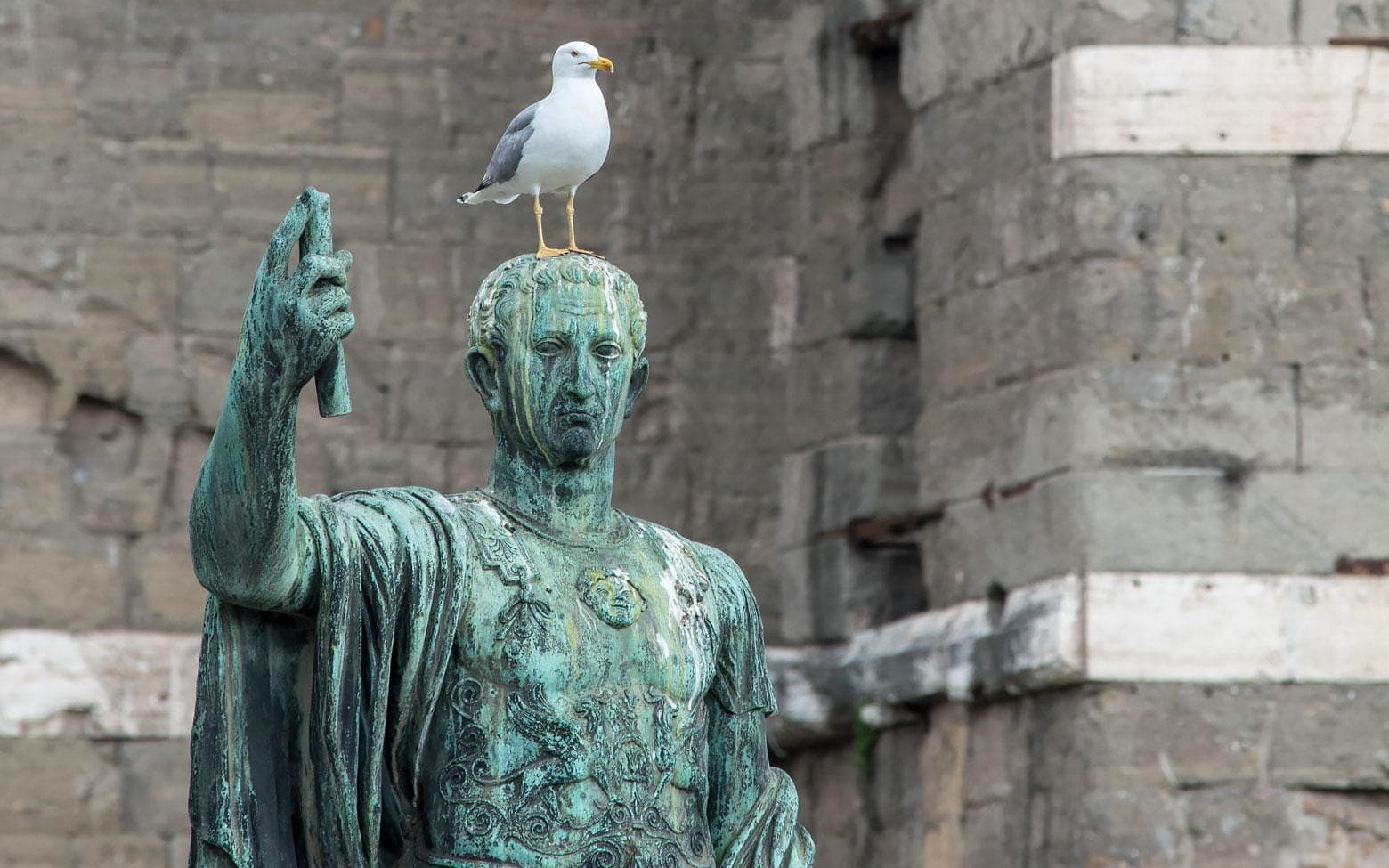
Get up early
This is something I’m sure most of you won’t do. Those of you who make the effort though, would enjoy some of the most magical moments of their life. At least once, try and get up around sunrise. All top European cities are swarming with tourist crowds during the day, something that really hides their magnificence. I know you’re on vacation, and you don’t want to get up early, but trust me, seeing Rome at sunrise is one of the most enchanting travel experiences ever.
Have comfortable shoes
Going to Europe and not packing comfortable shoes is suicide. All the cities here are best explored on foot. Even if they are pretty large and you’re forced to use public transport (great option) or a taxi, you’ll still end most of the days with plenty of walked kilometers. Ladies, I know you want to look good on your photos, but walking with high-heels, 10km+, on cobbled stones is really not worth it.
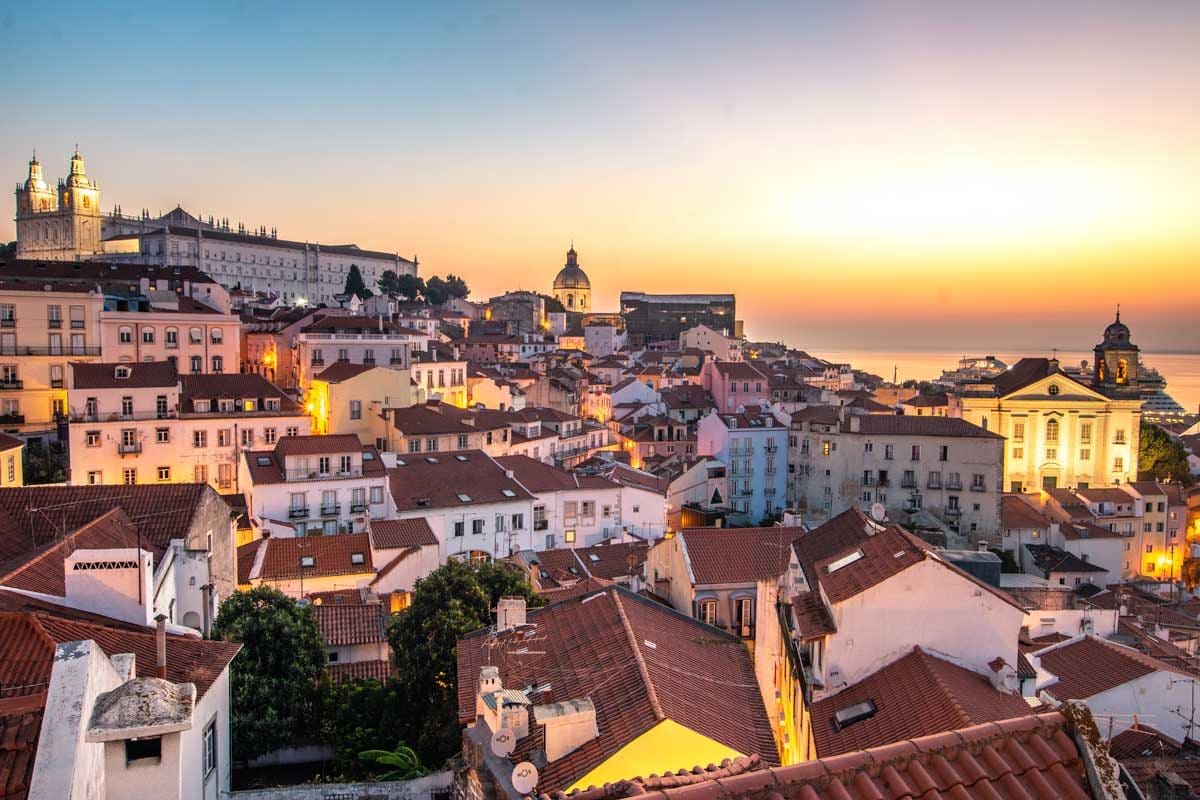
Mind the jet lag
If this is your first journey to another continent, you may underestimate this problem. To enjoy your 2 weeks in Europe to the max, though, you need to have the jetlag in mind, especially if you are coming from the west. Make sure to plan a relaxed itinerary for the first couple of days, so that your body can get used to the new ‘weird’ hours.
Two Week-Europe Itinerary FAQ
Planning 2 weeks in Europe is no joke, and you probably have plenty of questions. I’ll list the most popular here; if there anything else you wish to ask, I’d love to help you.
When to visit Europe?
Just like the perfect 2-week Europe itinerary, there is no one-size-fits-all answer here. The weather differs from country to country, and the best time to visit a nation depends on your budget and travel intentions.
Big cities are usually great in the shoulder seasons (March to June – September to November). You risk some rain showers, but temperatures are mild, and crowds are not in their peak. April is a bit of an exception due to the catholic countries gathering huge Easter crowds.
If you’re after a beach or a Ski vacation, obviously, Summer and Winter are your seasons.
Summer is the most popular travel season all around the Old Continent. Prices are high, tourists are everywhere, and some countries like Spain, Portugal, and Greece get hot as hell. Winter, on the other hand, sees the lowest prices and fewer tourists (unless around Christmas). Many cities are horrible to explore during winter, though, so unless you’re on a tight budget, I don’t recommend it.
Here’s a great wheater site I usually use to plan my travels.
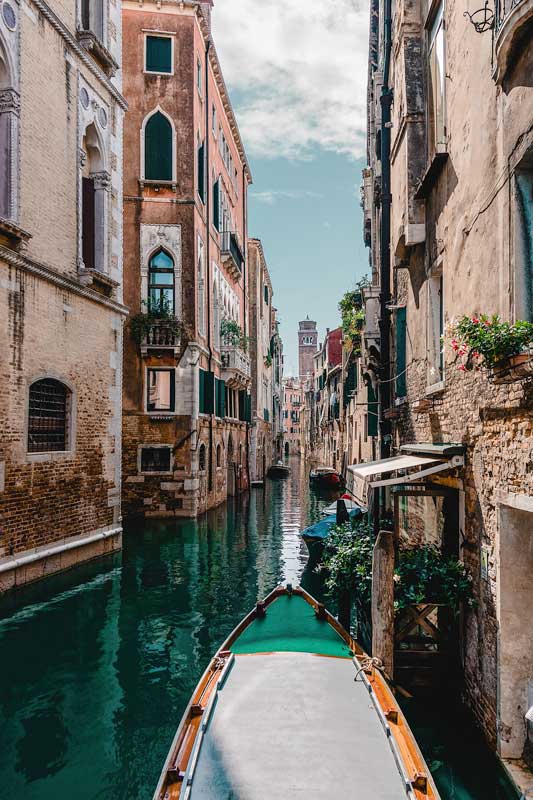
How to get around in Europe?
As I mentioned above, renting a car would be the easiest way to travel around Europe. If you’re not a driver, there are plenty of ways that suit every budget. For bigger distances, you can use low-cost airlines such as Ryanair and Wizzair. If the distances are smaller, you are better via train or a bus. Tickets can be found in GetYourGuide or Omio.
Buses especially can sometimes offer incredible deals. Once I traveled from Brussels to Pairs for just 7 EUR.
When we’re talking about getting around inside the cities, my recommendation is to go on foot. All European cities are extremely walkable, and there is no better way to feel the spirit of a place than walking around its winding alleys. If the city is too big ( like Paris or London), you can use the well-developed public transport. The metro system is usually the most convenient one.
Is Europe safe?
This depends on the country, but generally, the cities in Europe are as safe as it gets. While violent crimes won’t be an issue, you do have to be vigilant for petty crime. Pickpocketing around the major touristic sites is very common.
No matter how safe Europe is, I strongly suggest getting travel insurance. If anything, the latest global events taught us that something horrible can always happen. Being insured is the smart decision that can help you ease your worries and let you enjoy your adventure to the max. I currently use HeyMondo for my travels because they have proven themselves to me more than once over the years. The link above will give you a 5% discount, but If you have another favorite provider, that’s ok. Just make sure you have one because you never know what may happen.

Do I need a visa to visit Europe?
To visit most of the countries in Europe, you need a Schengen visa. The Schengen visa allows travel around the EU passport-free zone that covers most of the European countries. Some countries outside the EU also recognize the Schengen visa, while others inside the EU are not part of the Schengen zone. Thankfully the official Schengen website gives detailed information that will help you determine if you need a visa, how to get it, and how much it costs.
Is Europe expensive?
Europe could be incredibly expensive or absurdly cheap; it depends on the way you travel and the countries you visit. While France and the UK are among the most expensive nations in the world, countries in eastern Europe are often cheaper than places in Asia or South America. Check the average budget needed for every country on your 2-week Europe itinerary and make an adequate budget.
What currency do they use in Europe?
It’s the Euro, right? Yes…and no. Countries in the EU use the Euro, however, not all of them. Also, some countries that aren’t in the EU are allowed to use the Euro. And there are countries like Hungary where you can use both Euros and the local currency. Once you have your 2-week Europe itinerary set, check here and see what currency do you need.

Is English wide-spread in Europe?
If you stick to the big cities and the famous landmarks, you won’t have much trouble communicating. The only big European city I’ve been to where they didn’t speak English was Paris. And it’s not like they don’t know the language, they understand everything you tell them in English but prefer to answer in French for some reason.
That’s all from me, I hope you plan the perfect 2-week Europe itinerary.
————————————
If you haven’t planned your trip there yet, find out how I plan my trips!
————————————
I have 480 bucket list ideas for Europe. See my impossible bucket list of 1700+ adventures!
Have you been to Europe?
Some of the above are affiliate links and I will earn a percentage of the sale if you purchase through them at no extra cost to you. This helps keep my site running – so thanks in advance for your support!

